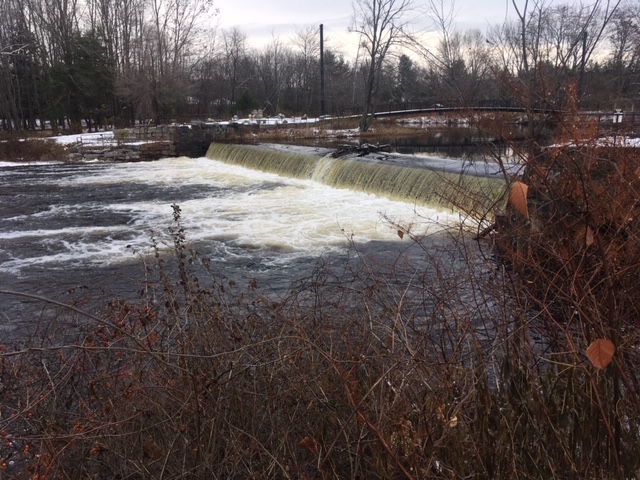Helping fish return to inland waters is no small thing. For many years – in some cases centuries – dams and culverts have blocked the passage of fish that live their entire lives in fresh water and also migrators such as salmon that move between salt and fresh waters.
During the last 30 years a lot has been done to open up streams and rivers, most dramatically in Washington state where private landowners have reportedly spent more than $300 million opening up more than 5,000 miles of fish habitat, and also where the state has been ordered by the courts to spend as much as $2.4 billion on new road culverts for the benefit of fish.
Less widely known is a fish passage project in Maine that recalls the first documented protest of a dam in North America.
The setting is the Presumpscot River, which flows to the sea. My book “Water Connections” describes a move in the 1730s by British Army colonel Thomas Westbrook to put the first dam in the river to power a mill.
A local Abenaki headman who’s identified in records as Chief Polin complained about the dam to colonial authorities in Boston. His argument: the dam blocked passage of fish, which were his people’s principal food source
Chief Polin’s protest is eloquently described in a 2010 paper titled “The Reciprocity Principle and Traditional Ecological Knowledge: Understanding the Significance of Indigenous Protest on the Presumpscot River” by Lisa T. Brooks and Cassandra M. Brooks in the International Journal of Critical Indigenous Studies.
Colonial authorities ordered Col. Westbrook to provide for fish passage, but he failed to comply. In time, more dams were built on the river, along with more encroachment on Native Americans’ lands – an intrusion that ultimately led to armed conflict.
In 1756, while leading a raiding party down the river, Chief Polin was shot and killed. Still more dams were built, and eventually European settlers began complaining about how those dams were blocking fish migrations. But little came of those complaints until the 1990s when environmentalists began making noise.
It took decades, but eventually the noise caused dams to crumble. Three weeks ago, the owners of old mill dams on the Presumpscot River in the town of Westbrook, Maine, began dismantling the structures – a step that sent water flowing freely over the Upper Saccarappa Falls for the first time in centuries.
Next comes the construction of a ladder-like fish passage system.
There are limits to what people expect will happen regarding fish movements. Salmon haven’t been returning to other Maine rivers where dams have been taken down, but herring, shad and shortnose sturgeon have been showing up in greater numbers.
The dam alterations on the Presumpscot had the force of a court ruling behind them. In 2006, the U.S. Supreme Court upheld the state’s requirements for fish passage and minimum water flow standards around the Presumpscot River dams.
And for years the non-profit Friends of the Presumpscot River, among other groups, campaigned for fish passage.
Meanwhile, in a fitting move a year ago, the Friends group announced a fund drive to build a monument to Chief Polin – appropriately in Westbook, the community named after the British colonel who built the first mill dam on the river 250 years ago.
Of the dam removal, Michael Shaughnessy, president of the Friends of the Presumpscot River, is quoted by the Portland Press-Herald as saying, “We always felt like we were picking up the mantle of Chief Polin, so I think he is smiling now.”



















